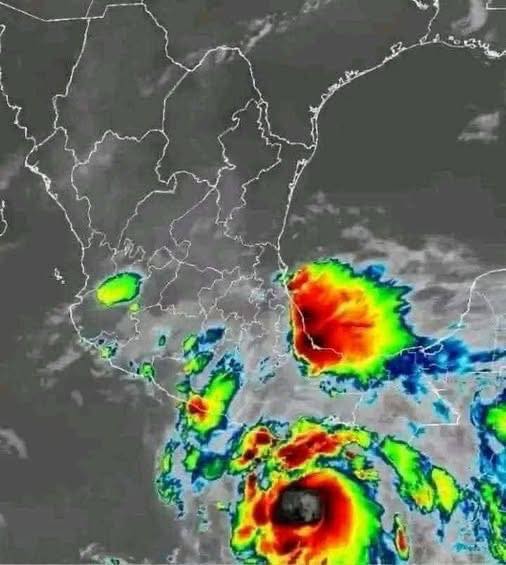Authorities across multiple states have issued urgent, unprecedented warnings as a massive hurricane barrels toward the coast, and experts are warning that this storm could prove catastrophic for millions of residents. Meteorologists report that the hurricane is rapidly intensifying, with winds expected to reach levels capable of causing severe structural damage, uprooting trees, and downing power lines over vast areas. The approaching storm is forecasted to bring not only destructive winds and torrential rainfall but also dangerously high storm surges capable of flooding low-lying areas, eroding coastlines, and overwhelming drainage systems. Emergency management officials are emphasizing that preparation must begin immediately, as the storm is moving at a rapid pace, leaving communities with very little time to respond if precautionary measures are delayed.
Rainfall projections indicate that certain areas could see several inches per hour, creating a serious risk of flash floods, mudslides in hilly or mountainous terrain, and widespread road closures. Authorities warn that these conditions could make it extremely difficult for emergency vehicles to reach people in need. Even communities far inland should not underestimate the potential for damage, as high winds can topple trees, snap utility poles, and scatter debris across roads, creating hazardous conditions for motorists and pedestrians alike. Officials are also highlighting the indirect dangers of such a powerful storm, including unsafe water, fallen power lines, and potential chemical spills or other accidents that can arise in industrial areas during extreme weather events.
State and local governments are mobilizing emergency response teams, coordinating evacuation plans, and preparing shelters to accommodate large numbers of residents, particularly the elderly, disabled, and those without reliable transportation. Authorities strongly recommend that families assemble emergency supply kits containing drinking water, non-perishable food, flashlights, batteries, first-aid supplies, essential medications, and important documents. Evacuation routes are being planned, with detailed instructions for residents to follow, and public transportation schedules may be modified to assist those needing to leave vulnerable areas. Officials also warn that waiting too long to evacuate could be life-threatening, as road congestion and rapidly worsening weather may hinder safe movement out of the storm’s path.
The National Hurricane Center continues to track the hurricane closely, providing frequent updates on its speed, projected path, and intensity. While the storm’s exact trajectory may shift slightly, the consensus among meteorologists is that highly populated coastal regions are at significant risk. Authorities emphasize that even individuals who have weathered previous hurricanes should not assume this storm will behave like past events, as every hurricane has unique characteristics that can dramatically alter its impact. Officials are urging the public to stay informed through reliable sources such as emergency alert systems, local authorities, and official weather channels, rather than relying solely on social media speculation.
Local communities are mobilizing to ensure the safety of vulnerable populations. Nursing homes, hospitals, and daycare centers are implementing contingency plans, and volunteers are assisting residents in securing homes, moving vehicles, and gathering supplies. Schools and businesses in the path of the hurricane are closing temporarily, and local media outlets are broadcasting continuous updates to help residents make informed decisions. Social media is also being used to share real-time information about shelter availability, road closures, and emergency assistance services, but authorities caution that rumors and misinformation can spread quickly, so verified sources must be prioritized.
In addition to physical dangers, experts warn of potential disruptions to power, water, and communication networks. Residents are encouraged to keep battery-powered devices charged, store extra fuel for generators, and have backup plans for contacting family members during outages. The combination of high winds, flooding, and potential infrastructure failures makes this storm particularly dangerous, even for those who consider themselves well-prepared. Emergency management officials stress that every precaution matters: securing windows, bringing outdoor furniture indoors, and reinforcing doors can help prevent additional damage.
In summary, officials are emphasizing that this hurricane represents a serious, life-threatening threat that requires immediate attention. Communities along the projected path should act now to protect themselves and their families. This storm’s arrival could lead to property destruction, power outages, and disruptions to essential services on an unprecedented scale. Residents are urged to prepare thoroughly, evacuate if instructed, and remain vigilant as the situation develops. The time to act is now, because in the face of such immense natural power, preparation, caution, and awareness may be the difference between safety and tragedy.
